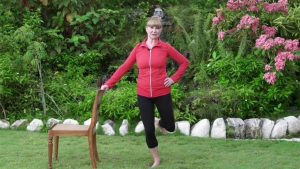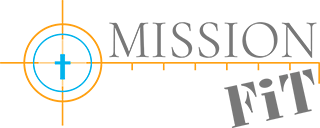MissionFiT athletes will be offered opportunities to tune up different aspects of their fitness. This month, join athletes as they
Move In March
This month’s challenge for athletes is to MOVE. And for most people, the easiest way to move is walking, hence the name of this month’s challenge “Move In March”. Let’s take a look at some benefits of walking and why adding “nourishing” movement to your fitness routine can give you an extra health boost.
Why Movement?
According to Innervative Therapies, “without movement we would deteriorate.” That’s pretty blunt. But this statement seems to fit the old adage “Use It or Lose It”. Your body naturally adapts to your daily routine. That’s why if you begin an exercise program after being sedentary for a long time, you may feel sore the next day. You have introduced something new in the mix and your body isn’t “feeling it”, even though you may be. Still, as Precision Nutrition points out: Movement tells our bodies to:
- retrieve stored energy (e.g. fat or glucose) and use it;
- store any extra energy in muscles, or use it for repair, rather than storing it as fat;
- strengthen tissues such as muscles, tendons, ligaments, and bones; and
- clear out accumulated waste products.
So it would seem that any kind of movement, from walking around the office to yard work to a full-on gym workout, is good for the body.
Moving Is N.E.A.T
Movement can be fun, but did you know it’s N.E.A.T, too? “Non-Exercise Activity Thermogenesis” or any activity that isn’t formal exercise, eating or sleeping, is beneficial to your overall health in many ways. NEAT is a great supplement to your daily routine. In fact, NEAT is a great supplement to help you lose weight. Here’s an example from NASM.org:
- A 145 lb. person burns approximately 102 calories an hour while performing their office job in a seated position (1.7 kcal / minute), but burns 174 calories an hour if performing those same office duties while standing. 174 calories may not seem like much, but it translates to 18,000 calories or a little over 5 lbs. over a 50-week work year (250 work days). By comparison, that same person would need to squeeze in 60, 30-minute runs at 5 mph to achieve that same caloric burn.

Think about that. Do YOU want to, let alone have time to complete 60, 30-minute runs?
Take a look at the chart. Your basic bodily functions account for about 50% of your daily energy expended. Add in the amount of energy it take to digest your food (T.E.F. in the chart). Now you’re up to 65 or 70% energy expended. The last two blocks are N.E.A.T and Exercise. But take a look at the break down. N.E.A.T expends at least twice as much energy as exercise. So, whether you know it or not, you get a pretty good workout just playing with your children, gardening or even cleaning your house. How’s THAT for incentive?
Movement Is Nourishing
Take a few minutes to watch this video from Nutritious Movement. The presenter notes “our current movement diet is like a food diet that is extremely restricted in quantity and variety.” We eat a variety of foods in order to get a variety of vitamins and nutrients. In the same way, we need to move our bodies in a variety of ways in order to get us moving efficiently. Examples of nourishing or nutritious movement include:
- Bending
- Reaching
- Standing
- Squatting
So, by exchanging a higher seated chair for a chair that is lower in height, you can train your body to move in such a way that will allow you, over time, be able to get on the floor and stand up.  Want some other ideas? Check out these resources:
Want some other ideas? Check out these resources:
- Classical Stretch by Essentrics
- Nutritious Movement – Katy Bowman
- MissionFiT’s Movement Library
- MissionFiT’s ReStore Series
- MissionFiT’s Office Health Hacks
Count Your Steps
In this world of smart phones and smart watches, just about everyone has a way to keep track of their steps during the day. It doesn’t matter if you use “an app for that” or a basic digital pedometer. The idea is to set a reasonable daily goal for yourself and start walking. According to The Calculator Site, it takes about 11,000 steps to reach the 5 mile mark. Of course walking this much takes up time you may not have in a busy day, so start small. Find out the average daily step you make for a week. Then slowly add about 500 steps per day on to that average. Even if you only make a goal of 5,000 steps for 3 days each week, you are starting to move. So lace up your shoes find a local street, greenway or treadmill and start putting one foot in front of the other!
